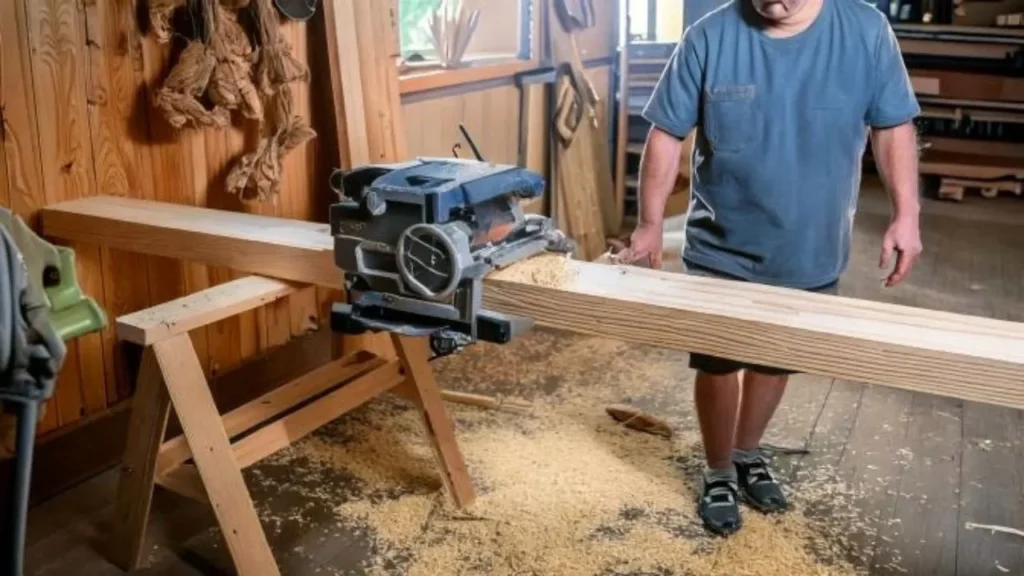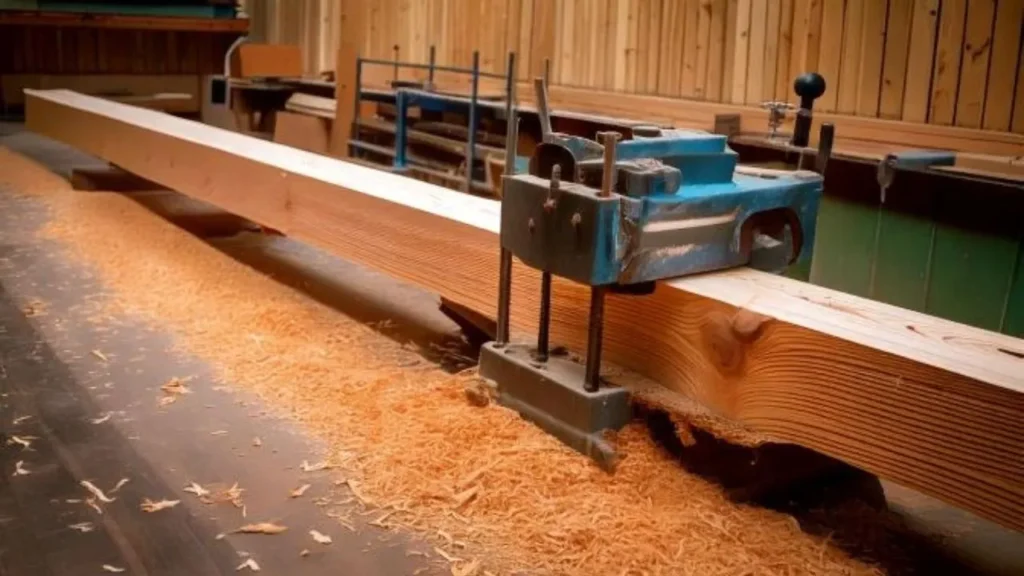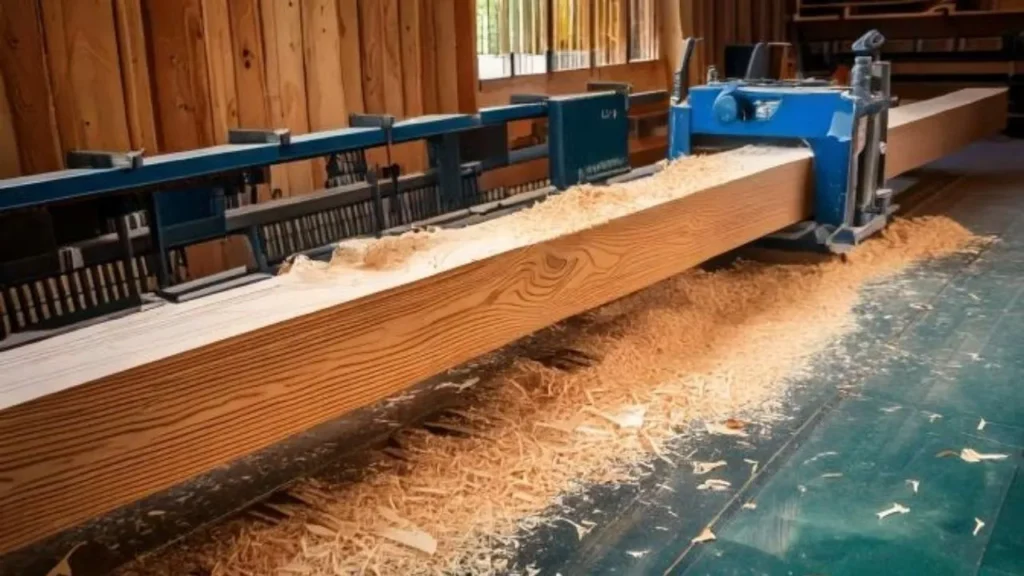Planing is a common woodworking technique used to smooth and level wooden surfaces. It is particularly crucial when dealing with heavy beams, as such materials often require considerable effort to achieve a satisfactory finish. However, not all tools are up to the task when it comes to managing larger pieces.
Can You Plane Heavy Beams With Portable Thickness Planer?
Yes, you can use a portable thickness planer to smooth heavy beams, but it’s often difficult and not the safest choice. The large size and weight of the beams make them hard to handle and can exceed what a small planer can manage.

For a smoother, easier job, consider hand tools like a hand plane or belt sander, or use a heavy-duty planer made for big beams if you work with them often. Always make sure the beam is well-supported and stable to avoid accidents.
Challenges Of Using A Thickness Planer
While portable thickness planers are incredibly useful tools, they do come with some limitations, especially when dealing with heavy beams. The main issue arises from the size and weight of the beams, which can exceed the capacity of most benchtop planers.
Most portable planers are designed to handle materials of a certain size and weight. A beam that is 10″” wide and 12 feet long can present a challenge for a standard 13″” benchtop planer. The weight and balance of the beam can be difficult to manage, leading to potential issues with the planing process.
Therefore, while it is technically possible to plane a heavy beam with a portable thickness planer, it is not always the most practical solution and may not deliver the best results. Furthermore, it may require additional support and precautions to ensure safety and effectiveness.
Weight & Handling Considerations
The first thing to consider is the sheer size and weight of a heavy beam. Let’s consider an example beam of 10″” wide x 4″” tall x 12 feet long, weighing nearly 100 lbs. Handling such a hefty piece of timber requires significant strength and control.
Feeding this beam through a benchtop planer can be a tricky task. The weight makes it difficult to maneuver the beam, and the length can be cumbersome, particularly in smaller workspaces.
The handling of such heavy beams requires not just physical strength but also precise control. Any misstep or imbalance can lead to accidents or damage the beam, the planer, or even worse, cause injury. Therefore, careful handling is crucial when it comes to working with heavy beams.
Ensuring Support & Stability During The Planing Process
Working with heavy beams demands diligent attention, particularly when it’s time to plane them. The sheer weight of the beam can make it a struggle to maintain stability during the planing process. Not to mention, the need for a support system is essential.

So, how do we ensure that our beam remains steady through the planing process? The answer lies in creating a robust support system. A support sled or box can be the perfect solution to keep your beam sturdy and level. This structure can help prevent any flexing or unwanted movement during the planing process. Think of it as a safety net for your beam, offering the extra pair of hands you need to keep things steady.
Limitations Of Planer Capacity For Heavy Beams
It’s crucial to understand that not all planers are created equal, especially when it comes to their capacity to handle heavy beams. Most benchtop planers come with limitations on the width and length of the material they can manage.
Take, for example, a 13″” benchtop planer. While it might be the perfect tool for smaller tasks, it could struggle with a beam that measures 10″” wide and 12 feet long. The weight and balance of such a beam can pose significant challenges. It’s like trying to fit a square peg into a round hole – the tool simply isn’t designed to handle material of this size and weight.
Alternative Methods
So, what can you do if your portable thickness planer isn’t up to the task of planing your heavy beam? Thankfully, there are a few alternatives that can help smooth out the surface of your large timber.
One option is using hand planes. While this method might be more time-consuming and demand a certain level of skill, it can offer a high level of finish. It’s a more hands-on approach, but the results can be worth the effort.
Another option is to use a belt sander. With a sanding frame to keep it level, a belt sander can be a useful tool to smooth the surface of your beam. Keep in mind, though, this process can be slower and might require frequent belt replacements.
If you find yourself frequently working with large timbers, it might be worth considering investing in professional equipment. Heavy-duty planers designed for larger tasks might be a necessary addition to your workshop. These machines are specifically designed to handle the size and weight of heavy beams, making your planing process safer and more effective.
In the world of woodworking, it’s about pairing the right tool with the right task. While a portable thickness planer can be a valuable tool, it might not be the best choice for planing heavy beams. By understanding the limitations of your tools and exploring alternative methods, you can find the best solution for your project.
Safety Precautions When Planing Heavy Beams
Working with heavy beams is no easy task. On top of the physical demands, there are significant safety considerations to be aware of. The very weight and size of the timber that makes it hard to handle can also present considerable safety risks. That’s why it is vitally important to take precautions when planing heavy beams, especially when using a portable thickness planer.
One of the main safety considerations is the risk of injury from handling such a large piece of timber. Lifting and maneuvering a heavy beam can strain your back and can even lead to serious injury if not done properly. It is essential to use proper lifting techniques, and whenever possible, get help from another person or use lifting equipment.

Another significant risk is that of accidents caused by improper handling of the beam during the planing process. If the beam is not secured properly, it can shift or even fall, causing damage to the planer and potentially causing injury. Therefore, it is crucial to ensure that the beam is properly supported and stable before starting the planing process.
Finally, as with any power tool, there are inherent risks involved in using a portable thickness planer. Always read and understand the safety instructions provided with your planer, and always use personal protective equipment, including safety glasses, ear protection, and a dust mask.
Professional Equipment Options For Large Timber Planing
While a portable thickness planer is a versatile tool, it may not always be the best solution for planing heavy beams. If you find yourself regularly working with large timbers, it might be worth considering investing in more professional equipment.
Heavy-duty planers are designed to handle larger tasks with ease. These machines are capable of managing the size and weight of heavy beams, making your planing process safer and more efficient. Some heavy-duty planers even come with features such as adjustable feed speeds and depth-of-cut settings, allowing you to customize the planing process to suit your specific needs.
However, acquiring professional equipment is not a decision to be taken lightly. It requires a significant investment, both in terms of money and space in your workshop. Before making such a decision, it’s important to consider the frequency of your heavy beam projects and whether the investment would be justified.
Conclusion
While it is technically possible to plane a heavy beam with a portable thickness planer, it is not always the most practical or safe solution. The weight and size of a heavy beam present significant handling and safety challenges, and the limitations of a portable planer’s capacity can make the process difficult and potentially unsafe.
Alternative methods, such as hand planing or using a belt sander, can sometimes provide a better finish, albeit with more time and effort required. Investing in professional equipment might be worth considering if you frequently work with large timbers.
Ultimately, the choice of equipment and method will depend on your specific circumstances, including the size and weight of the beam, your physical capabilities, the availability of help or lifting equipment, and the amount of time and effort you are willing to invest in the task. Whatever approach you choose, always remember that safety should be your top priority when working with heavy beams.